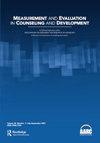结果评定量表的心理测量特性:项目反应理论分析
IF 2.2
4区 心理学
Q2 Psychology
Measurement and Evaluation in Counseling and Development
Pub Date : 2020-04-20
DOI:10.1080/07481756.2020.1745647
引用次数: 7
摘要
摘要:我们使用项目反应理论(IRT),以2109名加拿大咨询客户为样本,评估了结果评定量表(ORS)的视觉模拟量表(VAS)形式的心理测量特性。研究结果表明ORS是一维的,等间隔假设对VAS是不成立的。本文章由计算机程序翻译,如有差异,请以英文原文为准。
Psychometric Properties of the Outcome Rating Scale: An Item Response Theory Analysis
Abstract We assessed the psychometric properties of the visual analog scale (VAS) form of the Outcome Rating Scale (ORS) using item response theory (IRT) with a sample of 2,109 Canadian counseling clients. Findings indicate that the ORS was unidimensional and that the equal-interval assumption was not tenable for the VAS.
求助全文
通过发布文献求助,成功后即可免费获取论文全文。
去求助
来源期刊
CiteScore
2.40
自引率
10.00%
发文量
21
期刊介绍:
Measurement and Evaluation in Counseling and Development is an official journal of the Association of Assessment and Research in Counseling (AARC), a member association and division of the American Counseling Association. Articles range in appeal from those that deal with theoretical and other problems of the measurement specialist to those directed to the administrator, the counselor, or the personnel worker--in schools and colleges, public and private agencies, business, industry, and government. All articles clearly describe implications for the counseling field and for practitioners, educators, administrators, researchers, or students in assessment, measurement, and evaluation.

 求助内容:
求助内容: 应助结果提醒方式:
应助结果提醒方式:


